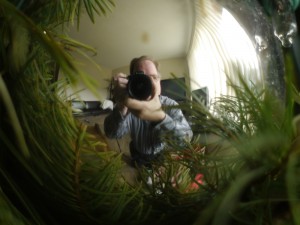Imaging Resource (Click here) had a long talk with MR. Darin Pepple, Senior Product Marketing Manager, Imaging at Panasonic Consumer Electronics Co. He was interviewed by Imaging Resource publisher Dave Etchells, senior editor Shawn Barnett, and features editor Arthur Etchells. Here is a section about the GH2 from the interview:
AE: What sorts of things might we see and what sorts of directions might Panasonic go with the successor to the GH2?
DP: Much has been talked about a successor for GH2. The GH2 has been out now for a little over a year, so people are wondering about the next model. There’s no one great thing I can say that we’re going to plan on and actually produce right at this time. Certainly, we’ll eventually produce something, right? But I think what you’ll see from us is to continue on trying to get a better and better and better video output for it. The GH product almost has a split brain. When I talk to people and I read the blogs–I participate once in a while on a few blogs just to see what people have to say–and there are two distinct worlds; completely right down the middle, video and still,at the high end. So you have a lot of people who are saying, ‘I just want it for its still camera capabilities. And it’s got great dials and accessibility.’ And then you’ve got the video world. They don’t care anything about that. They like the fact that it shoots amazing video; that you can hook boom mics to it; that you can hook it up as a director or videographer link through an HDMI cable; that it’s a lightweight platform. I see a lot of sports and action type photography–and I’m not talking about football, soccer, or that kind of thing; I’m talking about race cars–hooking it up to the bottom of a small, remote helicopter and flying it around, that sort of thing. It’s a lightweight platform and if it does get wrecked you’re not out the money you are out with a big DSLR rig system, let alone a conventional professional video system.
AE: A small footprint, in terms of both size and price.
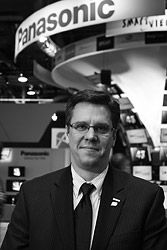 DP: Yes, and I think you’re probably going to see some more commercial applications in the future, such as wedding videographers–maybe they need a really great low light videography platform that maintains auto focus. Think about that, now: With a DSLR, if you’re going to go into a low light situation, such as a concert, where lots of laser lights are going and you’ve got the exposures changing constantly, you’ve got to track that exposure and change with it and you’ve got to somehow focus under low light conditions. That’s a lot to ask for from even a DSLR [or DSLR user] today. With our technology, with an X lens put onto it, it tracks like a proper video camcorder, for example, and it can adjust auto exposure in real time, following light changes really quickly. And at the same time, you’re getting just outstanding high-def quality video coming off of it. That, I think, is something that a mirrorless camera, or in our case the GH series, does really, really well.
DP: Yes, and I think you’re probably going to see some more commercial applications in the future, such as wedding videographers–maybe they need a really great low light videography platform that maintains auto focus. Think about that, now: With a DSLR, if you’re going to go into a low light situation, such as a concert, where lots of laser lights are going and you’ve got the exposures changing constantly, you’ve got to track that exposure and change with it and you’ve got to somehow focus under low light conditions. That’s a lot to ask for from even a DSLR [or DSLR user] today. With our technology, with an X lens put onto it, it tracks like a proper video camcorder, for example, and it can adjust auto exposure in real time, following light changes really quickly. And at the same time, you’re getting just outstanding high-def quality video coming off of it. That, I think, is something that a mirrorless camera, or in our case the GH series, does really, really well.
AE: So there has been a lot of interest in hacking GH2s. Might you take to heart some of those optimizations they're making when you're looking at future developments?
DP: You know… Yes and no? We do take a look at what they do, and we take it very seriously, because obviously that's what the customer wants. There are some limitations within the hardware and within the system specifications. For example, the AVCHD format; you know, we have to stay within the confines of what that AVCHD format says. Yes, you can go outside that with some hyped-up features and firmware updates and that sort of thing, but then you're outside the normal specification, and for us as a manufacturer, we really have to stay within it. At the same time, we know the level that the sensors can handle, we know the amount of cooling it's going to take, and to push it past it's limits, you're going to degrade the life expectancy of the product. Now, with a hopped-up camera, you somewhat expect that. You know, it's just like a car; if you push your car to the limit, you know something's going to happen eventually, right? So, as a consumer, go for it! But as a manufacturer, we have to stay within the limits of the standards and what we know the system itself can handle long term.
AE: So there's the caveat that you might be doing bodily harm to your camera…
DP: Hey, have fun; have a good time! Listen, that’s what photography’s all about anyway. I mean, how many photographers just take a product as is? They push it to the limits. That’s half the fun of photography. If you go back to the history of photography and you take a look at it, who started this stuff? Chemists, scientists, optics type people. They had a blast. It was a bunch of crazy technicians, that’s right. And if you take a look at the history of photography, it’s full of that. And I’m glad to see that that is still alive today. So I applaud them.”
Later about the the new X Lenses:
“DE: Is there a chart in the booth anywhere laying out a lens roadmap?
DP: We have two concept lenses in the booth. Both of them are conceptually the non-variable aperture types; a 12-35mm f/2.8 and a 35-100mm f/2.8.
DE: Yeah, basically the Micro Four Thirds versions of the classic 24-70mm and 70-200mm lenses; with constant aperture.
DP: When you do that [non-variable aperture], you do make the lens a bit bigger. Our concern has always been, ‘How do we keep the lens small and compact to stay in tune with the body styles of our cameras?’ After discussing it in great detail with the types of photographers who would really want a non-variable zoom, it turns out they don’t care. They want their non-variable zooms even if they have to be just a little bit bigger. So we’ve listened to that. That’s part of what we’ve been doing recently, showing the concepts around and saying, ‘Well, what do you think?’ Hands down, they say, ‘I’ll take it. I want it. Make it.’ “













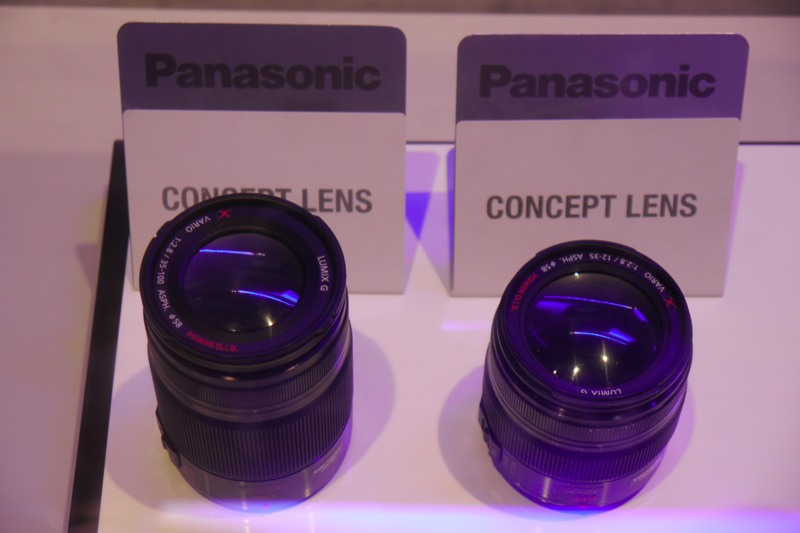
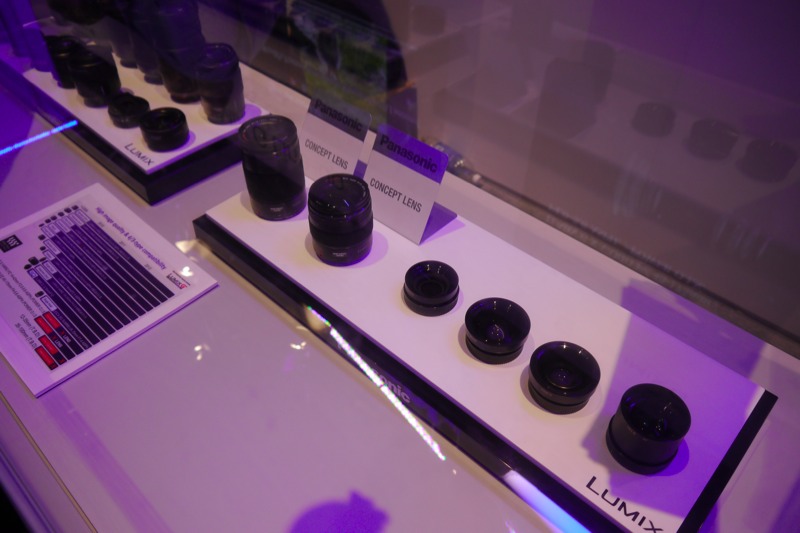


 When I was on vacation in Mexico last christmas, I was using my 60D with the Hoodloupe a lot. I really liked having an electronic viewfinder. One of my clients bought the
When I was on vacation in Mexico last christmas, I was using my 60D with the Hoodloupe a lot. I really liked having an electronic viewfinder. One of my clients bought the  At the end of last year
At the end of last year  I like the electronic viewfinder. A lot of the time when using the GH2 as a still camera, I don't even open the LCD because I see the playback image right away in the finder. I can play movies there as well. The viewfinder is very high resolution and can bee seen in daylight as well as in darkness. The viewfinder diopter works with my glasses but I am barley able to see the whole screen. I wish the rear lens of the viewfinder was bigger. I like that I am able to see audio levels and a histogram in the finder. All the necessary information is there. There are 4 levels of audio control. I have tested it with both lavaliere and a shotgun mic and it does not pump the auto gain more like a mild limiter which is OK.
I like the electronic viewfinder. A lot of the time when using the GH2 as a still camera, I don't even open the LCD because I see the playback image right away in the finder. I can play movies there as well. The viewfinder is very high resolution and can bee seen in daylight as well as in darkness. The viewfinder diopter works with my glasses but I am barley able to see the whole screen. I wish the rear lens of the viewfinder was bigger. I like that I am able to see audio levels and a histogram in the finder. All the necessary information is there. There are 4 levels of audio control. I have tested it with both lavaliere and a shotgun mic and it does not pump the auto gain more like a mild limiter which is OK.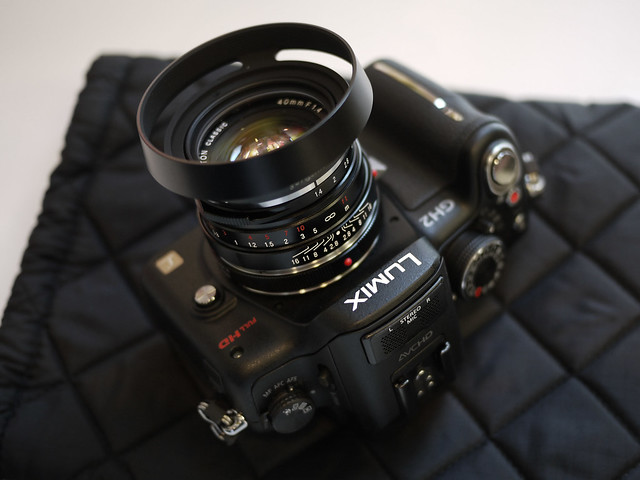 Because the Micro Four Thirds camera don't have a mirror behind the lens many different lenses can be used. I have an
Because the Micro Four Thirds camera don't have a mirror behind the lens many different lenses can be used. I have an  I had just bought the JVC HM100 tapeless video camera to replace my Sony V1, but my clients wanted the HDSLR look. With the Redrock the image was soft and hard to get because of all the adjustments. It was a beast and it did not like being handheld. Then came the HDSLR. The Canon 5D markII came out which shot 1080p video and some my associates were buying Canon. I realized that I was behind and that I needed to catch up.
I had just bought the JVC HM100 tapeless video camera to replace my Sony V1, but my clients wanted the HDSLR look. With the Redrock the image was soft and hard to get because of all the adjustments. It was a beast and it did not like being handheld. Then came the HDSLR. The Canon 5D markII came out which shot 1080p video and some my associates were buying Canon. I realized that I was behind and that I needed to catch up.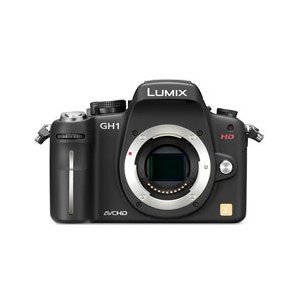 I was interested in the
I was interested in the  After seeing what Canon HDSLR's could do, I sold my Olympus E-System and bought the Canon 7D. The 7D is a mixed blessing. A 35mm motion picture sized sensor instead of 35mm still sized sensor on the 5D. The Canon shot h264 video in Quicktime and could be viewed easily in the finder. There is 1080p at 24 and 30 fps. 720p at 60 fps. All modes are not interlaced and at broadcast friendly frame rates. They are progressive. Great looking video in a small package but only in certain circumstances.
After seeing what Canon HDSLR's could do, I sold my Olympus E-System and bought the Canon 7D. The 7D is a mixed blessing. A 35mm motion picture sized sensor instead of 35mm still sized sensor on the 5D. The Canon shot h264 video in Quicktime and could be viewed easily in the finder. There is 1080p at 24 and 30 fps. 720p at 60 fps. All modes are not interlaced and at broadcast friendly frame rates. They are progressive. Great looking video in a small package but only in certain circumstances.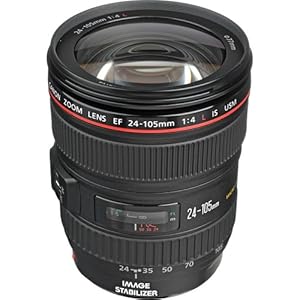 There is moiré and ailising because Canon line skips the CMOS chip because it has much resolution that HD video. There is Rolling Shutter which makes the video look like jello. So I also bought the better “L-Glass” for my Canon because I could afford it now because it was for my video camera. In fact I bought the
There is moiré and ailising because Canon line skips the CMOS chip because it has much resolution that HD video. There is Rolling Shutter which makes the video look like jello. So I also bought the better “L-Glass” for my Canon because I could afford it now because it was for my video camera. In fact I bought the 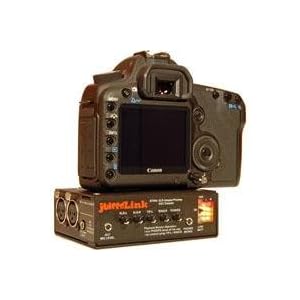 Then there is audio. There is no headphone jack. The 7D had a pumping auto gain on the audio that could not be overdid, which is not good. The internal mic was mono. Most people used double system audio with a separate audio recorder. This does not fit into my book of simple and small. I found the
Then there is audio. There is no headphone jack. The 7D had a pumping auto gain on the audio that could not be overdid, which is not good. The internal mic was mono. Most people used double system audio with a separate audio recorder. This does not fit into my book of simple and small. I found the 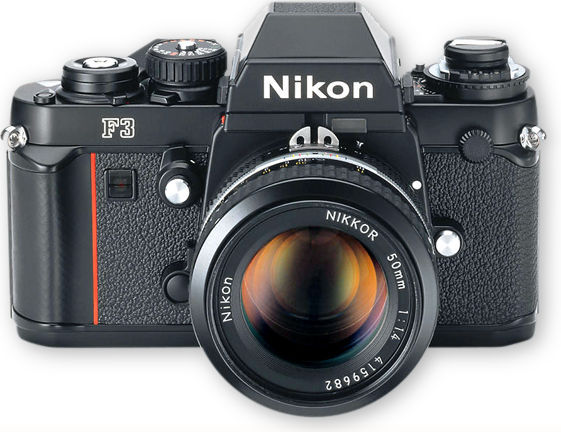 Through out all this time I still had my film Nikon F3‘s even though a lot of others had moved on to autofocus cameras. I shot slides instead of prints and loved my beloved Kodachrome. I loved my Nikons and had used them for over 30 years. As you can see I used the “professional big boys of the business, Sony, Nikon” when it was the best for me. They might had not been the most cost efficient but did turn out to be frugal because of the way I used them.
Through out all this time I still had my film Nikon F3‘s even though a lot of others had moved on to autofocus cameras. I shot slides instead of prints and loved my beloved Kodachrome. I loved my Nikons and had used them for over 30 years. As you can see I used the “professional big boys of the business, Sony, Nikon” when it was the best for me. They might had not been the most cost efficient but did turn out to be frugal because of the way I used them. In 2001 I sold my beloved Nikons for this new thing called a digital still camera. I had already converted to digital with video and was taking stills from my VX1000 video camera. I bought a Sony F707 consumer camera with built in lens instead of a SLR because they were still $3,000. It had a low resolution electronic viewfinder. I really liked the smallness of the camera and instant feedback that digital gave me.
In 2001 I sold my beloved Nikons for this new thing called a digital still camera. I had already converted to digital with video and was taking stills from my VX1000 video camera. I bought a Sony F707 consumer camera with built in lens instead of a SLR because they were still $3,000. It had a low resolution electronic viewfinder. I really liked the smallness of the camera and instant feedback that digital gave me. When the Canon Digital Rebel came out, I got a DSLR. At the time I could not afford “L-Glass”, so I had consumer lenses because still photography was secondary to video. A few years later when going on a vacation trip I need a second still camera so I bought at Costco an Olympus E300. I was immediately impressed with the quality of the lenses and the camera. The jpegs out of the camera looked the best in terms of color quality compared to using any other camera. I was used to shooting slides so I like shooting jpeg and mostly do. I also had an Olympus E1 and then an Olympus E3 and was very happy. I truly loved the swivel LCD on the E3.
When the Canon Digital Rebel came out, I got a DSLR. At the time I could not afford “L-Glass”, so I had consumer lenses because still photography was secondary to video. A few years later when going on a vacation trip I need a second still camera so I bought at Costco an Olympus E300. I was immediately impressed with the quality of the lenses and the camera. The jpegs out of the camera looked the best in terms of color quality compared to using any other camera. I was used to shooting slides so I like shooting jpeg and mostly do. I also had an Olympus E1 and then an Olympus E3 and was very happy. I truly loved the swivel LCD on the E3. I have never wanted to be “Trendy” in the video business. Even at college I pushed the primitive equipment to the max. At a TV station I modified stuff to work better for me and I used a consumer camera with a 3/4 inch video deck with out telling the engineers. It passed broadcast. I put a 400mm Nikkor on my JVC KY-2000 so I could record President Reagan getting out of his helicopter at his ranch in Santa Barbara 6 months before the national networks did it. After working for the TV station, I moved to Los Angeles to freelance. In the Los Angeles area we never got permits to shoot. We like to be stealth and work without a large crew. I did Pete Ellis Dodge spot with me and the director. (One of them made it into a tv inthe movie “Into The Night.” Occasionally we rent sound stages for bigger shoots but still a small crew. I was one of the first to do a “making of” documentary on a feature film as a one man band with a JVC KY1900 and a 3/4 inch portable video deck. I have always looked at way to “do it better.”
I have never wanted to be “Trendy” in the video business. Even at college I pushed the primitive equipment to the max. At a TV station I modified stuff to work better for me and I used a consumer camera with a 3/4 inch video deck with out telling the engineers. It passed broadcast. I put a 400mm Nikkor on my JVC KY-2000 so I could record President Reagan getting out of his helicopter at his ranch in Santa Barbara 6 months before the national networks did it. After working for the TV station, I moved to Los Angeles to freelance. In the Los Angeles area we never got permits to shoot. We like to be stealth and work without a large crew. I did Pete Ellis Dodge spot with me and the director. (One of them made it into a tv inthe movie “Into The Night.” Occasionally we rent sound stages for bigger shoots but still a small crew. I was one of the first to do a “making of” documentary on a feature film as a one man band with a JVC KY1900 and a 3/4 inch portable video deck. I have always looked at way to “do it better.”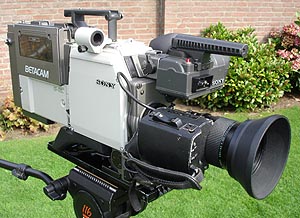 After I moved to the Pacific Northwest, I was one of the first in the area to purchase a Sony Betacam camera because it was one of the first “camcorders” because I did not have to rely on a separate video recording deck. I had adopted the camcorder before the local TV stations had used them. Once I rented a Schwen Gyro-Zoom for my Betacam so I could shoot from a helicopter because it was one of the first lenses with optical image stabilization (O.I.S.). When Sony put O.I.S. in their TR-100 Hi8, I also used Hi8 professionally because the cameras were so small. OIS made a small camera hand holdable.
After I moved to the Pacific Northwest, I was one of the first in the area to purchase a Sony Betacam camera because it was one of the first “camcorders” because I did not have to rely on a separate video recording deck. I had adopted the camcorder before the local TV stations had used them. Once I rented a Schwen Gyro-Zoom for my Betacam so I could shoot from a helicopter because it was one of the first lenses with optical image stabilization (O.I.S.). When Sony put O.I.S. in their TR-100 Hi8, I also used Hi8 professionally because the cameras were so small. OIS made a small camera hand holdable. Then the Sony DCR-VX1000 MiniDV camcorder came out and I was in “Nirvana.” Immediately I bought one because it offered what I had always wanted. A very high quality camera in a small lightweight package. It offered 3 chip component video in an optical image stabilized camera that weighed 3 vs 30 pounds. It cost $4,000 vs $30,000. Like “Duh.” This made a lot of sense. The camera was immediately back ordered for 9 months so my camera had a lot of use because it was rented. I kept that camera for 10 years.
Then the Sony DCR-VX1000 MiniDV camcorder came out and I was in “Nirvana.” Immediately I bought one because it offered what I had always wanted. A very high quality camera in a small lightweight package. It offered 3 chip component video in an optical image stabilized camera that weighed 3 vs 30 pounds. It cost $4,000 vs $30,000. Like “Duh.” This made a lot of sense. The camera was immediately back ordered for 9 months so my camera had a lot of use because it was rented. I kept that camera for 10 years.